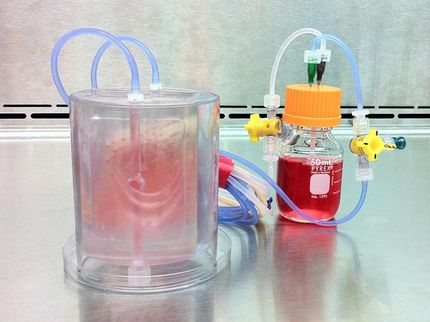Skin-like tissue developed from human embryonic stem cells
Dental and tissue engineering researchers at Tufts University School of Dental medicine and the Sackler School of Graduate Biomedical Sciences at Tufts have harnessed the pluripotency of human embryonic stem cells (hESC) to generate complex, multilayer tissues that mimic human skin and the oral mucosa (the moist tissue that lines the inside of the mouth). The proof-of-concept study is published online in advance of print in Tissue Engineering Part A.
"For the first time, we have established that a single source of hESC can provide the multiple cell types needed to interact within a three-dimensional tissue model to generate complex, multilayer tissues. We are a step closer to a practical therapy to help with diseases of the skin and mouth," said Jonathan Garlick, DDS, PhD, professor of oral and maxillofacial pathology at Tufts University School of Dental Medicine and a member of the cell, molecular & developmental biology program faculty at the Sackler School of Biomedical Sciences at Tufts.
"Researchers have been seeking methods to grow skin-like tissues outside of the body using new sources of stem cells such as hESC, with the goal of advancing regenerative medicine as a new therapy to replace or repair damaged or diseased tissue. Little is known about how hESC can be developed into the multilayer tissues similar to those that line the gums, cheeks, lips, and other areas in the mouth. We used in vitro tissue engineering techniques to produce skin-like tissues that mimic the lining tissues found in the oral cavity," said Garlick.
Using a combination of chemical nutrients and specialized surfaces for cell attachment, an hES cell line (H9) was directed to form two distinct specialized cell populations. The first population forms the surface layer (ectodermal, the precursor to epithelial tissue), while the second is found beneath the surface layer (mesenchymal).
Following the isolation and characterization of these cell populations, the researchers incorporated them into an engineered, three-dimensional tissue system where they were grown at an air-liquid interface to mimic their growth environment in the oral cavity. Within two weeks, tissues developed that were similar in structure to those constructed using mature cells derived from newborn skin, which are the current gold standard for tissue fabrication.
"These engineered tissues are remarkably similar to their human counterparts and can be used to address major concerns facing the field of stem cell biology that are related to their clinical use. We can now use these engineered tissues as 'tissue surrogates' to begin to predict how stable and safe hESC-derived cells will be after therapeutic transplantation. Our goal is to produce functional tissues to treat oral and skin conditions, like the early stages of cancer and inflammatory disease, as well as to accelerate the healing of recalcitrant wounds," said Garlick.
Original publication: Kyle J. Hewitt et al.; "Three-dimensional epithelial tissues generated from human embryonic stem cells"; Tissue Engineering Part A, Published online July 6, 2009 in advance of print
Most read news
Other news from the department science

Get the life science industry in your inbox
By submitting this form you agree that LUMITOS AG will send you the newsletter(s) selected above by email. Your data will not be passed on to third parties. Your data will be stored and processed in accordance with our data protection regulations. LUMITOS may contact you by email for the purpose of advertising or market and opinion surveys. You can revoke your consent at any time without giving reasons to LUMITOS AG, Ernst-Augustin-Str. 2, 12489 Berlin, Germany or by e-mail at revoke@lumitos.com with effect for the future. In addition, each email contains a link to unsubscribe from the corresponding newsletter.


















































